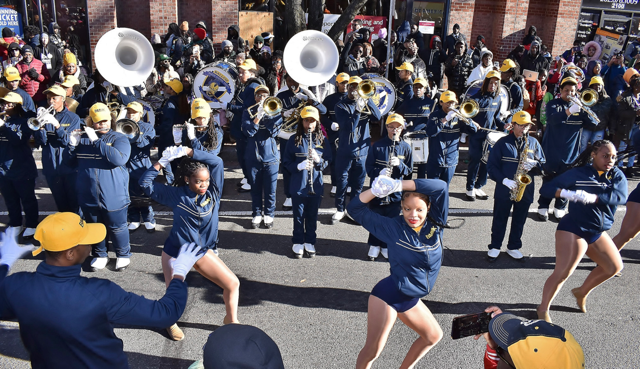Troops of tiny pests are munching away lawns in the D.C. area. News4’s Derrick Ward reports.
Creepy, crawling troops of pests are invading D.C. area lawns and threatening to take over.
They're called armyworms and they can quickly gobble up grass, leaving homeowners who take pride in their plush, green lawns aghast.
"It was amazing how quickly it happened,” homeowner Susan Couch told News4.
Like little lawn mowers, the armyworms munched away and killed their grass in little more than 24 hours.
We've got the news you need to know to start your day. Sign up for the First & 4Most morning newsletter — delivered to your inbox daily. Sign up here.
"The reason they’re called armyworms is behavioral. There are just so many that they begin to advance across someone’s lawn in a front and you can see them moving over the course of time," said Bob Mann, the director of state and local government for the National Association of Landscape Professionals.
"They’re taking over two of our neighbors' [yards]," Couch said.
She said friends in Ohio have also experienced the same problem.
Local
Washington, D.C., Maryland and Virginia local news, events and information
The Smithsonian Magazine reports armyworms are attacking lawns and crops at an "unprecedented scale" in the Northeast, Midwest, South and Southwest this year.
Mann said the pest is actually similar to a moth in its larval stage, which allows it to travel far.
"They’ll be down in the South doing their thing, eating corn, eating soybean.
The adults are fantastic flyers. They can get up into the currents thousands of feet above the ground and travel 500 miles in a day," Mann said.
The armyworms likely floated into the D.C. area carried on the winds of recent tropical storms from their usual homes in the Caribbean and the southern and western U.S., Mann said.
Armyworms can only survive tropical winters, Mann said, so they likely won't survive the first frost.
But what do you do if armyworms attack your lawn?
Bethany Pratt, the Jefferson County horticulture education agent for the University of Kentucky's Cooperative Extension Service, told the Louisville Courier Journal that concerned homeowners should take a jug of soapy water and dump it onto the eaten grass. Doing so will push any buried armyworms to the surface where you can see them.
The caterpillars have a “Y” shape on the back of their heads and three stripes that run down the middle of their bodies.
Pratt said there's not much that can be done once the grass is brown, but it's important not to rush to reseed as a second wave of armyworms is likely around the corner. She said to watch for the next round of eggs and use insecticides to treat the lawn five to seven days after seeing egg masses.
Couch said they have had some success with pesticides.
"We're starting to see regrowth which is great," she said.



